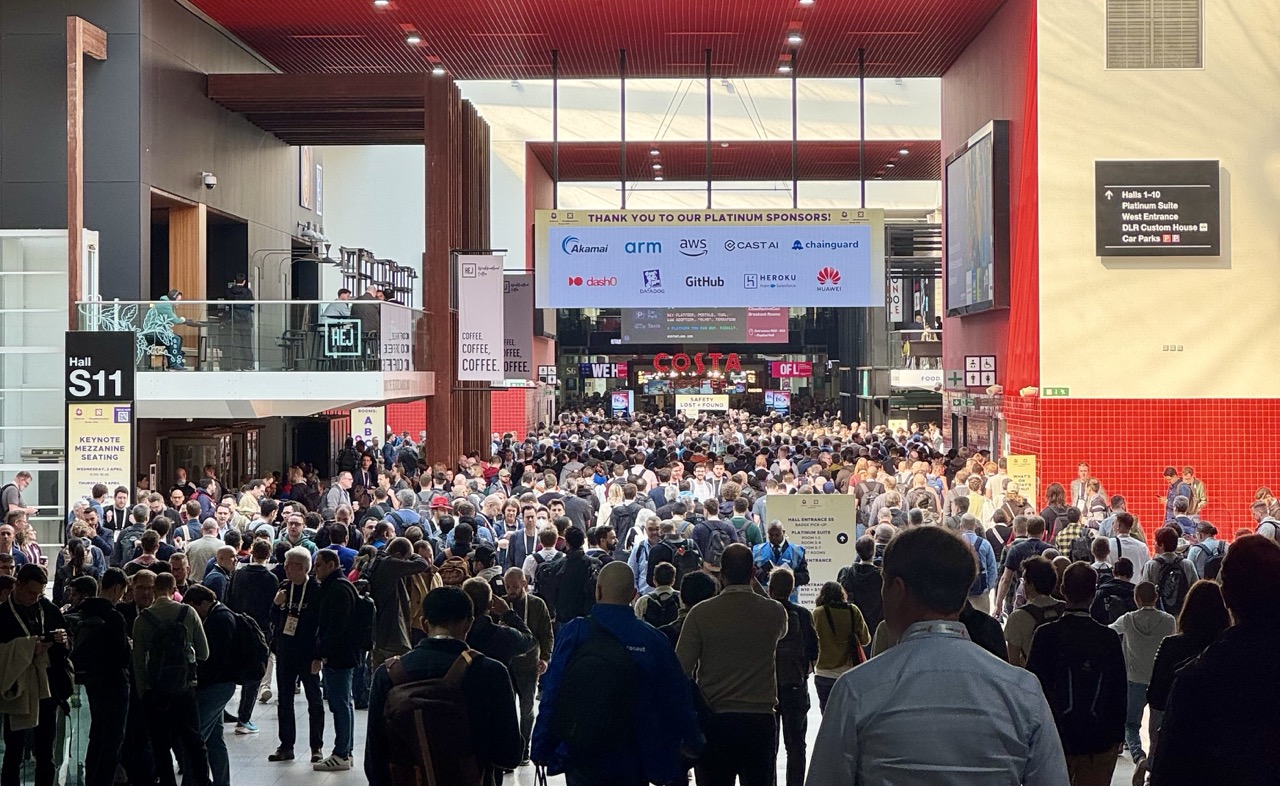Springtime is here, and that means it's time for KubeCon + CloudNativeCon EU once again! This year, the cloud native community gathered in London, which amusingly provided no real clouds at all. ☀️
After four days filled with amazing talks, hunting for swag among sponsor booths, reconnecting with old friends, and making new ones, I've distilled my many impressions into a few key takeaways.

CNCF Turns 10 - And Is Determined to Show Its Maturity and Commitment
Since its formation 10 years ago, the Cloud Native Computing Foundation (CNCF) has become the shepherds of an ever-growing number of open-source projects, totaling 223 at the time of writing. Much like the widespread adoption of Linux, which has powered the modern interconnected world for decades, CNCF technologies such as Kubernetes are achieving global industry adoption and significance.
As the CNCF enters its second decade, it is poised to demonstrate its capability in maintaining some of the world's most critical software. By maturing processes and enhancing sustainability, the CNCF is preparing Kubernetes and related projects to cement themselves and serve as cornerstones of global cloud infrastructure for many decades to come.

The Economy Has Been Better - And It Shows on the Job Market
Since the last European KubeCon a year ago, the global economy has become increasingly stagnant due to geopolitical uncertainty and rising interest rates. Many companies are tightening their budgets, and few are hiring.
In the midst of the event, the U.S. imposed widespread import tariffs, sending Wall Street deep into the red. This is just the latest in a series of events impacting the global economy, serving as a stark reminder of why organizations are minimizing their financial risks.
Meanwhile, unemployment is high in many parts of the world. In Sweden, it has reached historically high levels, hitting 9.0 percent in February. Understandably, workers in the cloud native space are pessimistic about the coming years.
Last Year Was All about Jumping on the AI Train - We Now Realize Running LLMS in Production Is Difficult
The AI hype was undeniable last year—everyone was building on top of LLMs and anything that fell under the "AI" umbrella. Now, a year later, it's evident that running such systems in production with effective observability is quite challenging. The community is gradually learning how to monitor and debug these production systems, but the nondeterministic nature of generative AI remains a significant hurdle for operations teams everywhere. This issue is currently unresolved. The question is, can it ever be fully solved?

Companies Moving Away from OSS Licensing - The Aftermath
Following the likes of Hashicorp, the popular KV store Redis adopted a non-open source license around the same time as KubeCon Europe last year. Truly open source alternatives quickly emerged and Valkey soon became the leader. Just look at the GitHub stars...
Most seem to be migrating from Redis to Valkey, while others are already done. This is only one example, and there are more like it. However, it sends a strong signal to companies that closing down their core open source projects, that the community have helped build and support, is a bad business decision. Hopefully, this deters future re-licensing efforts among business leaders and investors.
Platform Engineering - The Art of Building and Selling an Internal Product
Another hot trend from last year's EU KubeCon was the recently adopted term platform engineering. A platform engineer typically works on a team that provides internal platform tooling to software engineers, enabling application ownership from code to production by a single team. However, simply building a platform for developers isn't enough. To be successful, the platform must be treated as a product, with the end users or customers being the engineers. Meeting the engineers' requirements is crucial. Every obstacle removed increases engineering efficiency, which is where the business value lies.
I heard one example, and I'm sorry that I'm not able to recall from where, but to paraphrase: To deploy a database before the company's internal platform was introduced, teams would have to put in a Jira ticket that might take days or weeks to be acted upon. Now, with their internal developer platform, this database could be deployed in seconds by the responsible developers. This served as a major boost to developer efficiency and satisfaction, and I completely understand why.
Internal platforms, when done right, have the power to dramatically improve developer experience and efficiency without sacrificing control. The message from the community is very clear: Build your platform as a product, and listen to your customers (engineers)!

Final Thoughts
As this year's KubeCon has come to a close, and I've made my way back to the relative cold of northern Sweden, I'm incredibly grateful that I once again had the opportunity to attend this amazing event. It is really the people and the community that makes KubeCon special. Thanks to everyone I met up with. Until next time!